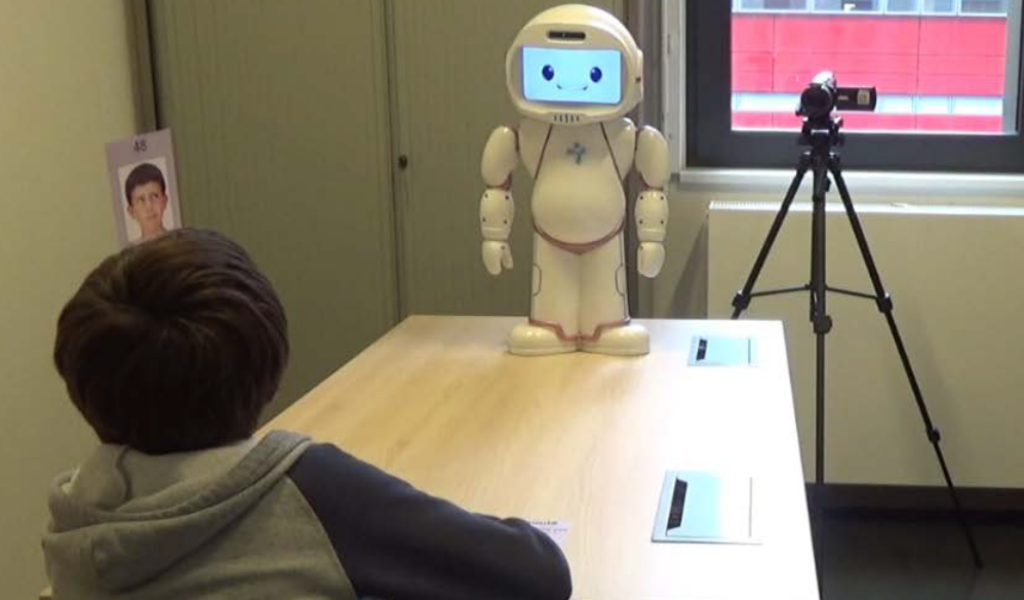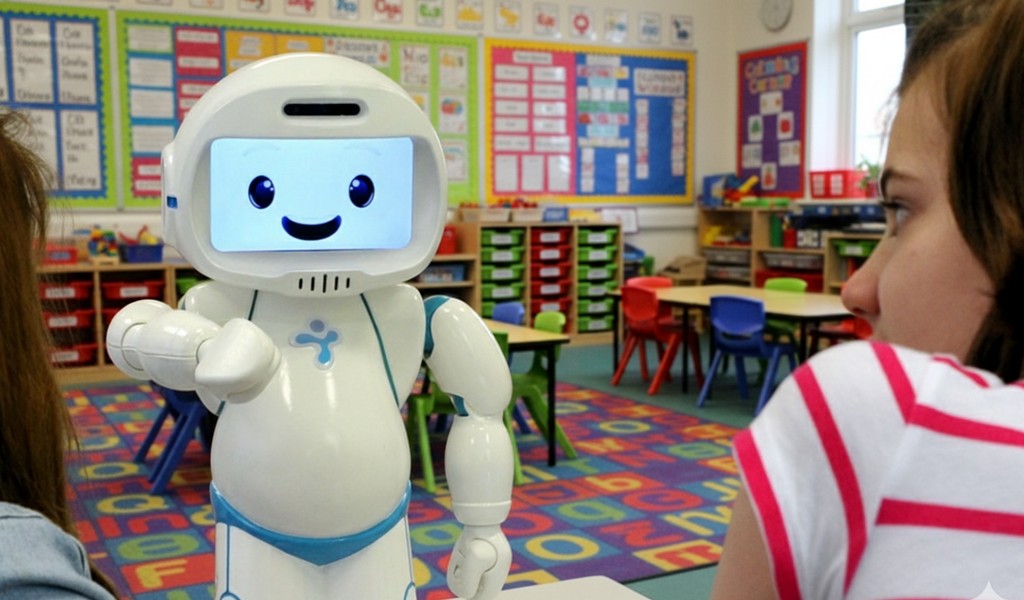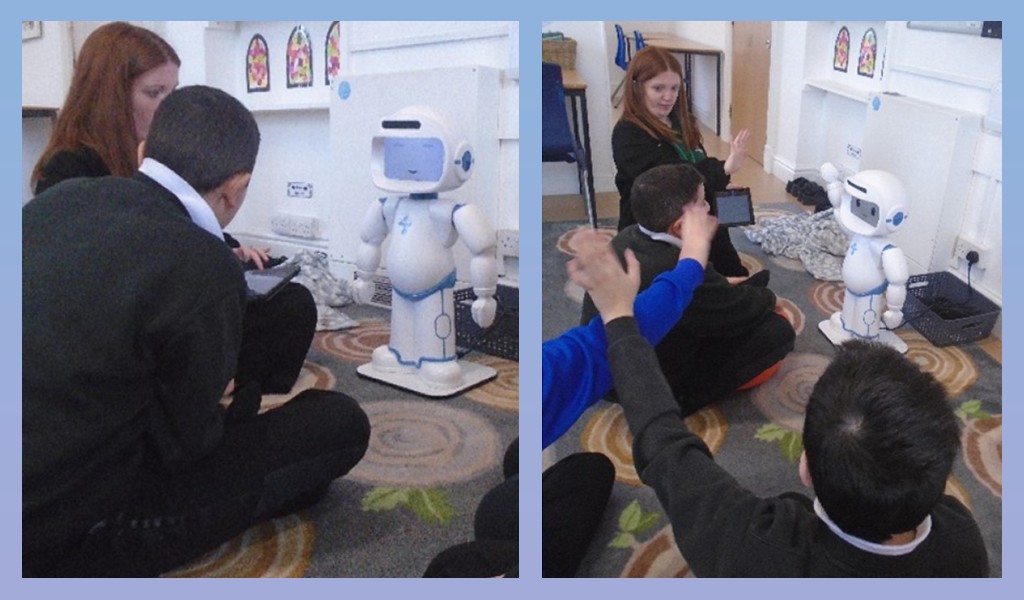Children with Autism Spectrum Disorder (ASD) often have mental health problems that are related to their challenges in recognizing and interpreting emotions or their difficulties in controlling and reacting to emotions. Therefore, teaching emotions to children with autism and implementing interventions to enhance their emotional skills has the potential to improve children’s mental health and quality of life.
However, traditional emotional skills trainings are often costly, difficult to access, and sometimes inefficient, since human interaction is often too demanding on the learners with autism and prevents them from getting engaged enough to benefit from the training.
Using Social Robots For Teaching Emotions To Children With Autism
Often children with ASD have a preference for routines and easily get engaged with machines and technology. This makes technology, and in particular the humanoid robots promising mediums to teach emotional skills to them. Humanoid robots have all the benefits of technology such as standardization and mass replication, but at the same time, they have a social embodiment that allows them to stand somewhere between a tool and a social being.
There are several scientific studies demonstrating that social robots in general can bring a lot to the table for teaching new skills to children with autism spectrum disorder. For example, it has been shown that using QTrobot, an expressive humanoid robot, enhances the engagement of kids with autism and reduces their anxiety. While working with QTrobot, children show less stereotypical behaviors compared to when working with a human caregiver, demonstrating that they are calmer and less nervous.
But what about teaching emotions? Can social robots be successfully used and have a positive impact for teaching emotional abilities to children with autism? To answer these questions, researchers of the University of Luxembourg conducted the following experiment in which they developed an emotional ability training which were administered to the children with ASD by QTrobot.
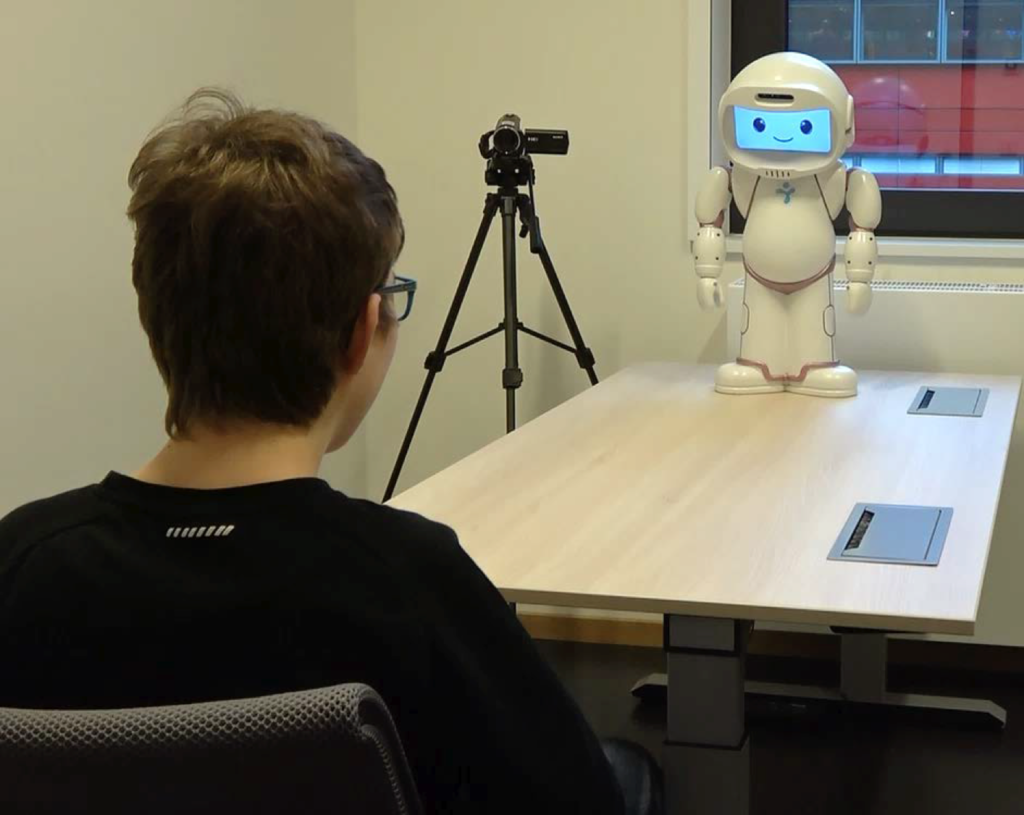
In a research project of University of Luxembourg, QTrobot, a socially assistive robot, was used for teaching emotions to children with autism
The Emotion Training Study For Children With ASD At University Of Luxembourg (1)
Twelve children participated in this study. All of them were boys between the age of 8 to 14 years. All the children had previously confirmed ASD diagnosis (Based on DSM-5 criteria of ASD diagnosis). All the children were able to understand simple instructions and were able to read simple words such as the names of emotions.
To teach emotion-related skills, a training program was developed including a variety of activities such as games, role-playing, and stories. Then QTrobot, played the games, told the stories, and delivered feedback to the kids participating in the sessions.
Overall, children attended 7 sessions of training, each lasting about an hour. Sessions were focused on teaching skills such as emotion recognition, emotion expression, emotional reactivity, awareness of own’s emotions, awareness of emotions in others, controlling owns’s emotions and learning how to react to other people’s emotions.
Every session finished with QTrobot summarizing the lessons and asking the learner to practice the skills at home and other occasions. The sessions were conducted at least one week apart.
To evaluate the impact of the robot enhanced training, researchers assessed children once before and once after the emotional training. In the pre-training phase, children’s IQ (1), Emotional abilities (2) and mental health (3) were assessed. Then one week after the last training session, the tests for emotional abilities and mental health were repeated to find out if the training had impacted the situation comparing to the baseline.

Pre and post-assessments to evaluate the impact of teaching emotions to children with autism using QTrobot
Results Of The Robot-Delivered Emotional Ability Training Study*
1- Effects on the Children’s Emotional Abilities:
Analysis of the direct assessment of children’s emotional abilities demonstrated that children’s emotional ability appropriateness was significantly higher after the training. However, there were no significant changes in the parent-reported measures except a slight improvement in children’s ability to control their emotions.
2- Effects on the Children’s Mental Health:
Evaluations showed that children have significantly less internalizing problems such as anxiety and depressions after the emotional skills education with QTrobot. However, there was not a big difference in externalizing problems such as impulsivity.
3-Effect on the autism-related symptomatology:
Children’s autism-related symptomatology significantly reduced in all scales after the robot-mediated training. Based on the questionnaires filled out by the parents, children had better social communication and fewer social interaction problems.
Conclusion:
In this blog post, we discussed a research project which has shown the mental health benefits of robot-based emotion training for children with autism spectrum. As in most other research experiments in the field, studies with more number of children are needed to better understand the impact of social robots in teaching skills and in this case teaching emotional skills to the children.
Similarly, further studies are needed to measure the impact of receiving longer-term training from robots. For example in this experiment, the children received each training session only once, while children have different learning speed and providing the opportunity for the children to repeat the sessions could improve the outcome of the training.
Also adding a control group who would receive the same training from a human would provide further insight on the impact of the robot compared to a human trainer. However, the value of using the robot is not limited to the benefits it can provide directly such as in terms of increased engagement and reduced anxiety. Robots also provide values in standardization and replication to make quality training more accessible.
QTrobot Curriculum For Teaching Emotions To Children With Autism:
LuxAI has developed a comprehensive emotional skills training program for learners with ASD and social communicational difficulties. The curriculum includes 17 units, distributed in 6 modules covering skills related to Emotion imitation, Emotion recognition, Emotion generation, Naming emotions, Emotion understanding and Emotion regulation.
In this educational curriculum, QTrobot uses a variety of evidence-based practices to teach emotions, such as Modelling, Social Skills Training and Social Narratives. It also uses Verbal and Visual Prompting and Reinforcement to support the learners.
A core objective of any training is Generalization, meaning that children can generalize what they have learnt from the training sessions to other situations and to their natural environment. QTrobot emotional training curriculum uses a variety of stimuli to facilitate generalization. In addition, the sessions include active involvement of the trainer where QTrobot diverts the attention of the learner to the trainer and asks the learner to practice the skills with the human partner.
Learn more about the QTrobot curriculum for teaching emotions:
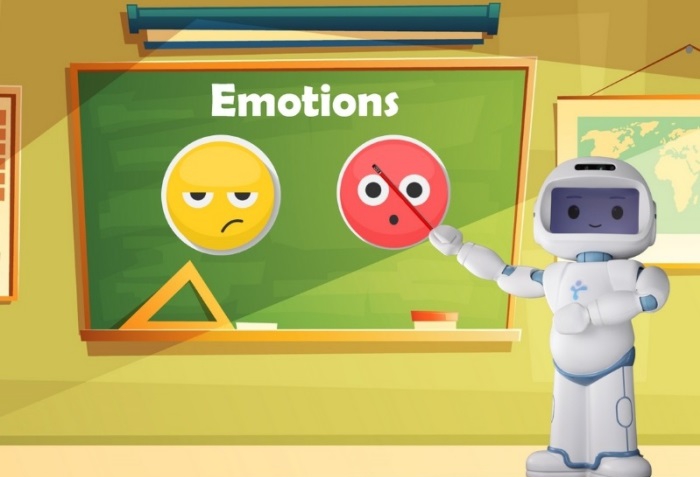
QTrobot curriculum for teaching emotions to children with autism spectrum disorder
References:
* The study results are published in the International Society for Autism Research (INSAR), 2019
Mental Health Benefits of a Robot-Mediated Emotional Ability Training for Children with Autism: An Exploratory Study
A. P. Costa1, L. Kirsten2, L. Charpiot3 and G. Steffgen4, (1)University of Luxembourg, Esch sur Alzette, LUXEMBOURG, (2)University of Trier, Trier, Germany, (3)University of Luxembourg, Esch-sur-Alzette, Luxembourg, (4)Institute for Health and Behaviour, University of Luxembourg,
(1) The IQ was assessed using the Wechsler Nonverbal Scale of Ability
(2) Emotional ability was measured using the parent-report measures including the Emotion Regulation Checklist, the Emotion Regulation Rating Scale, the Self-Control Rating Scale, and the Alexithymia Questionnaire for Children, as well as through a direct measure of children’s use of emotion regulation strategies using the Reactive and Regulation Situation Tasks.
(3) Mental health was measured through the parent-report measures including the Children Behavior Checklist, the Strengths and Difficulties Questionnaire, and the Social Responsiveness Scale-2.
* For full disclosure, we acknowledge that we closely collaborated and provided various implementation support to the research project discussed in this article, however, to avoid any conflict of interests, we had no participation in collecting, analyzing and reporting the results.
